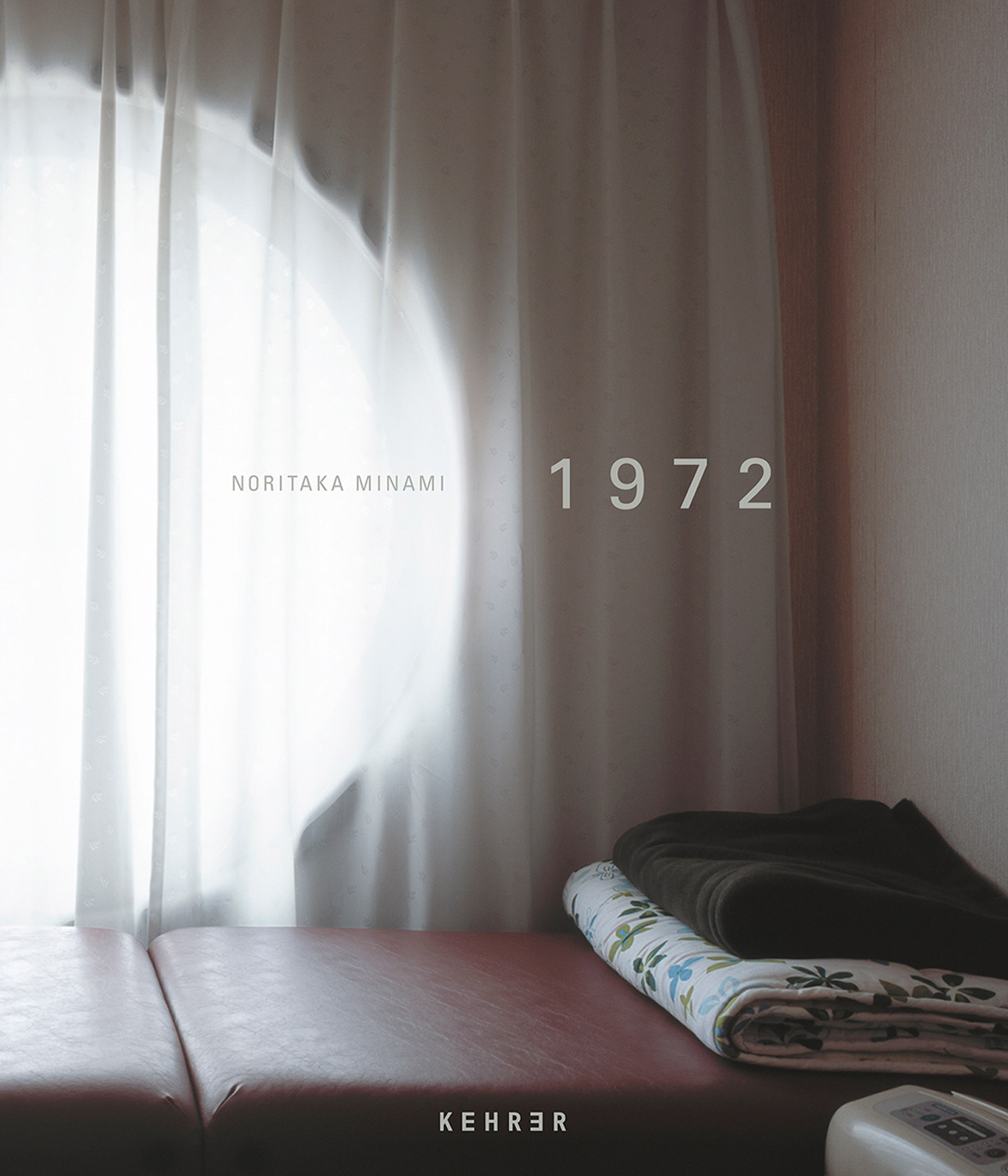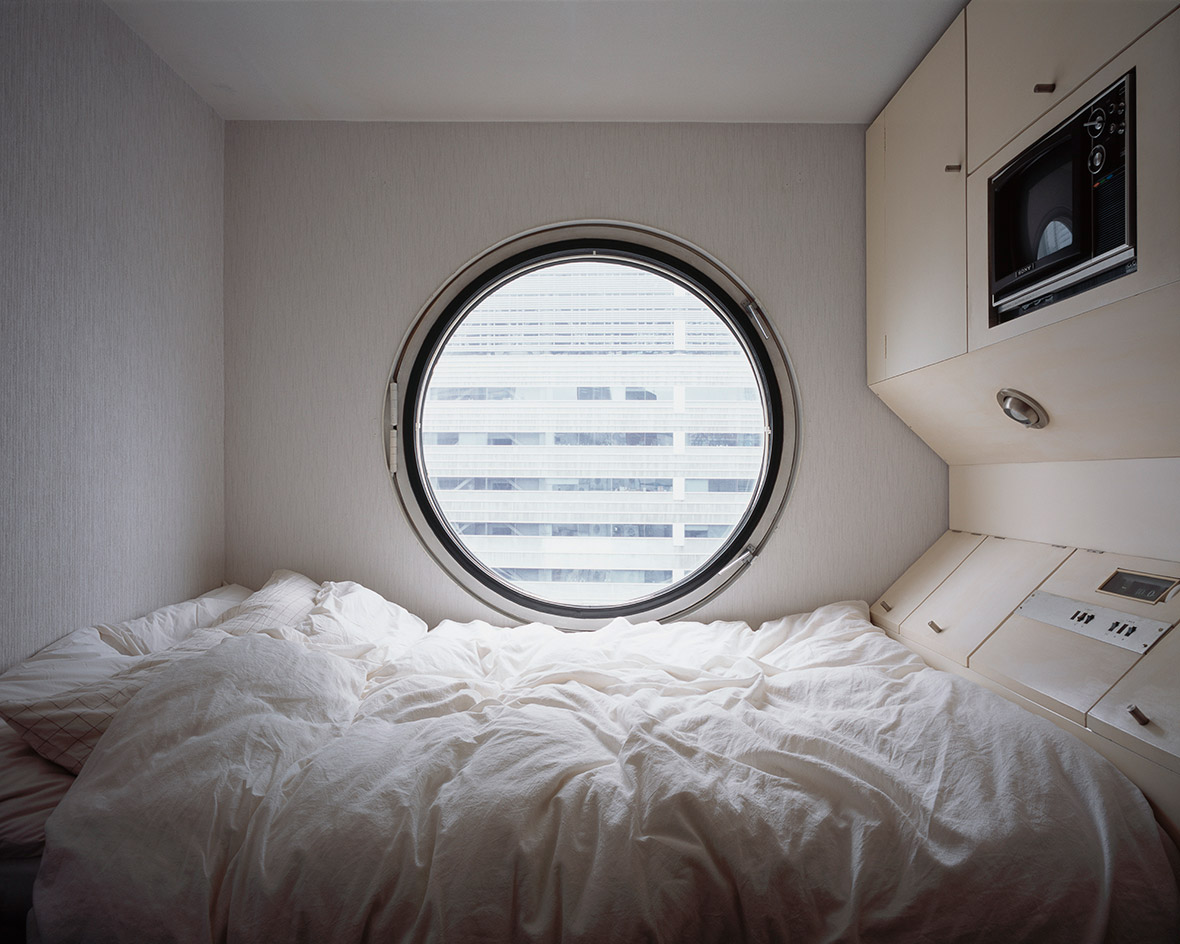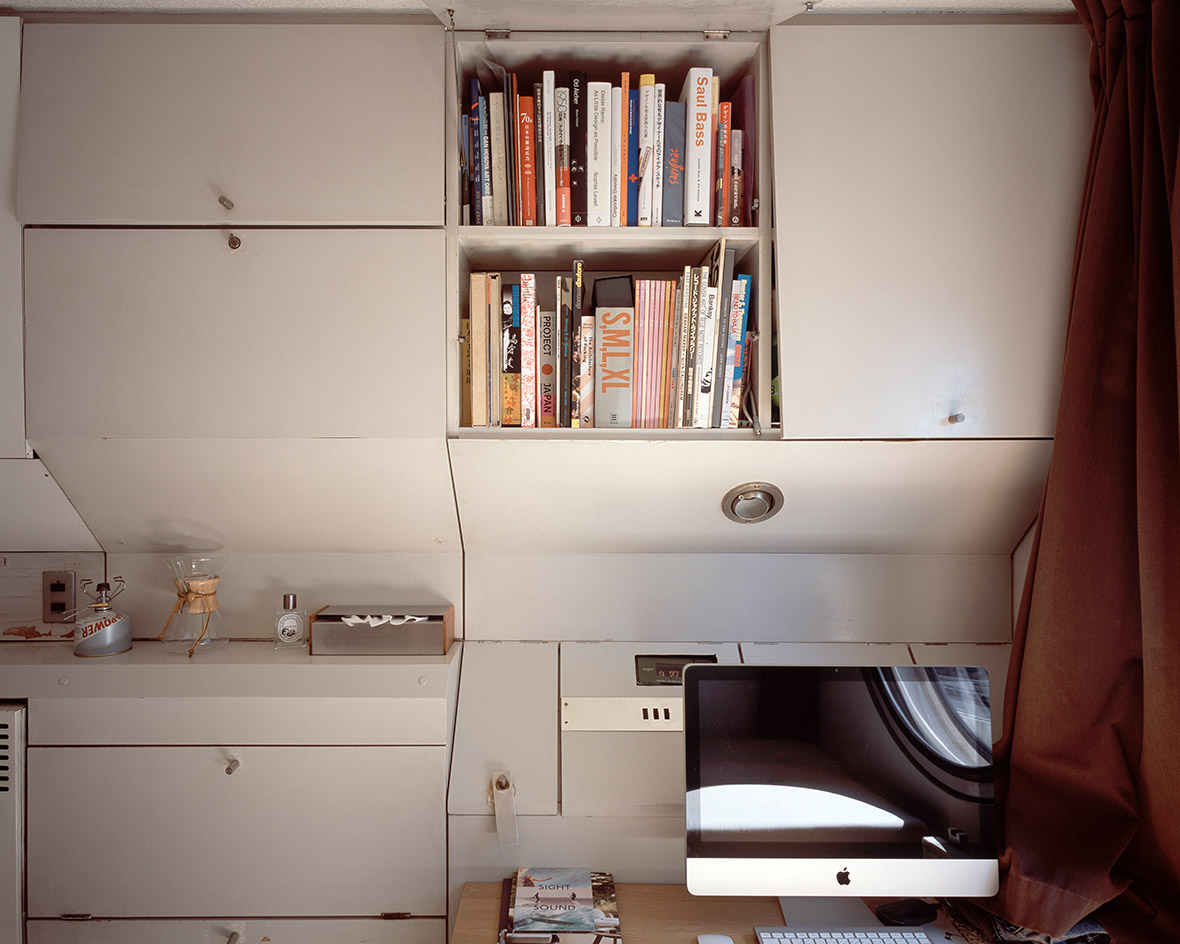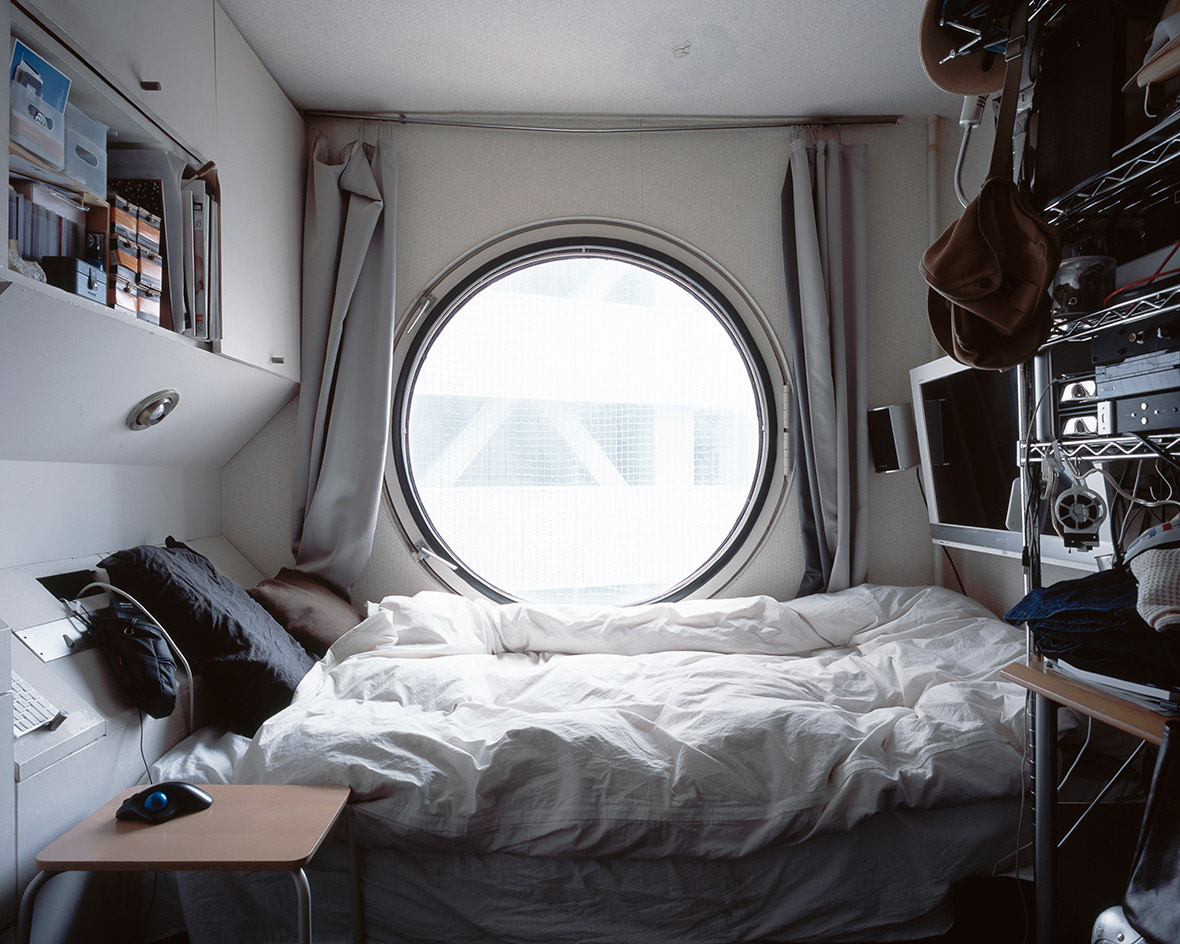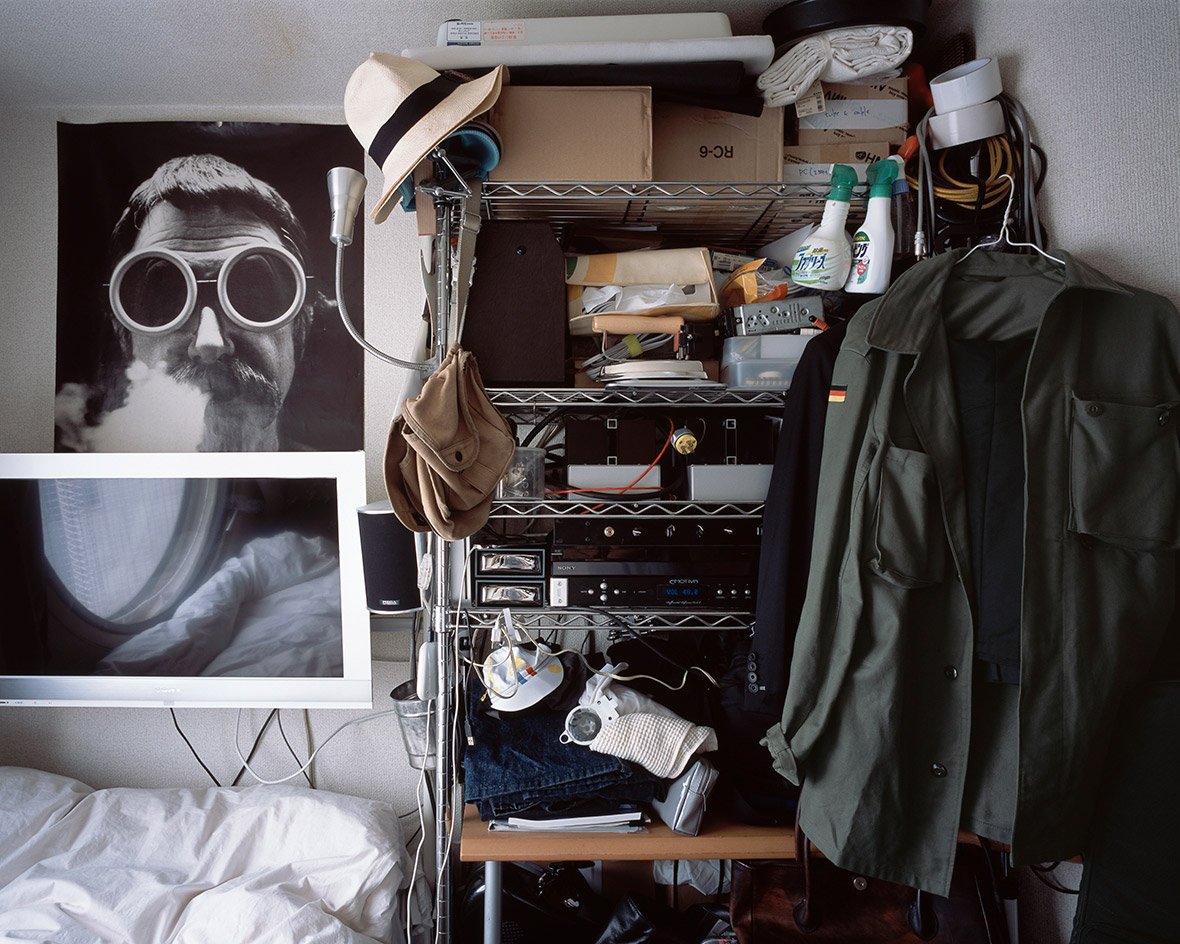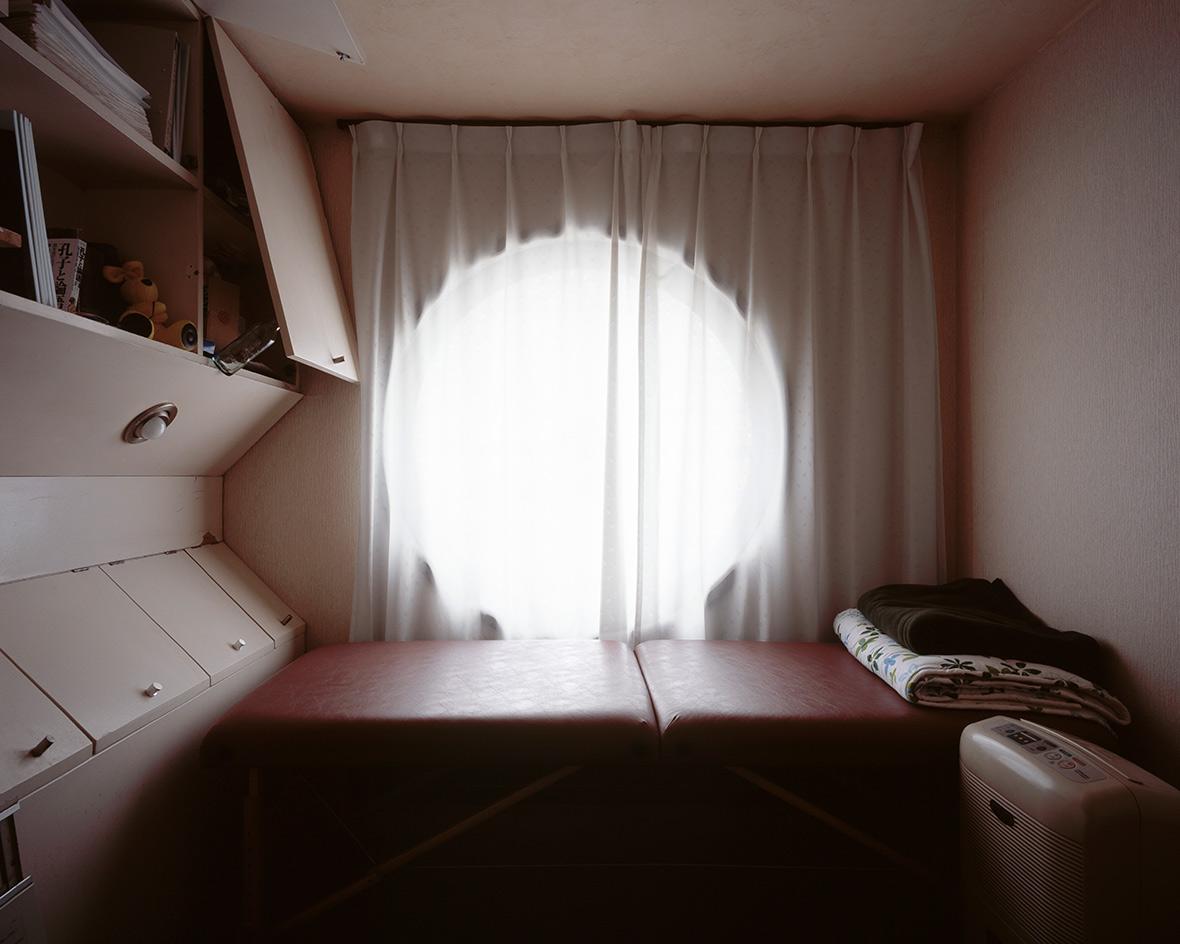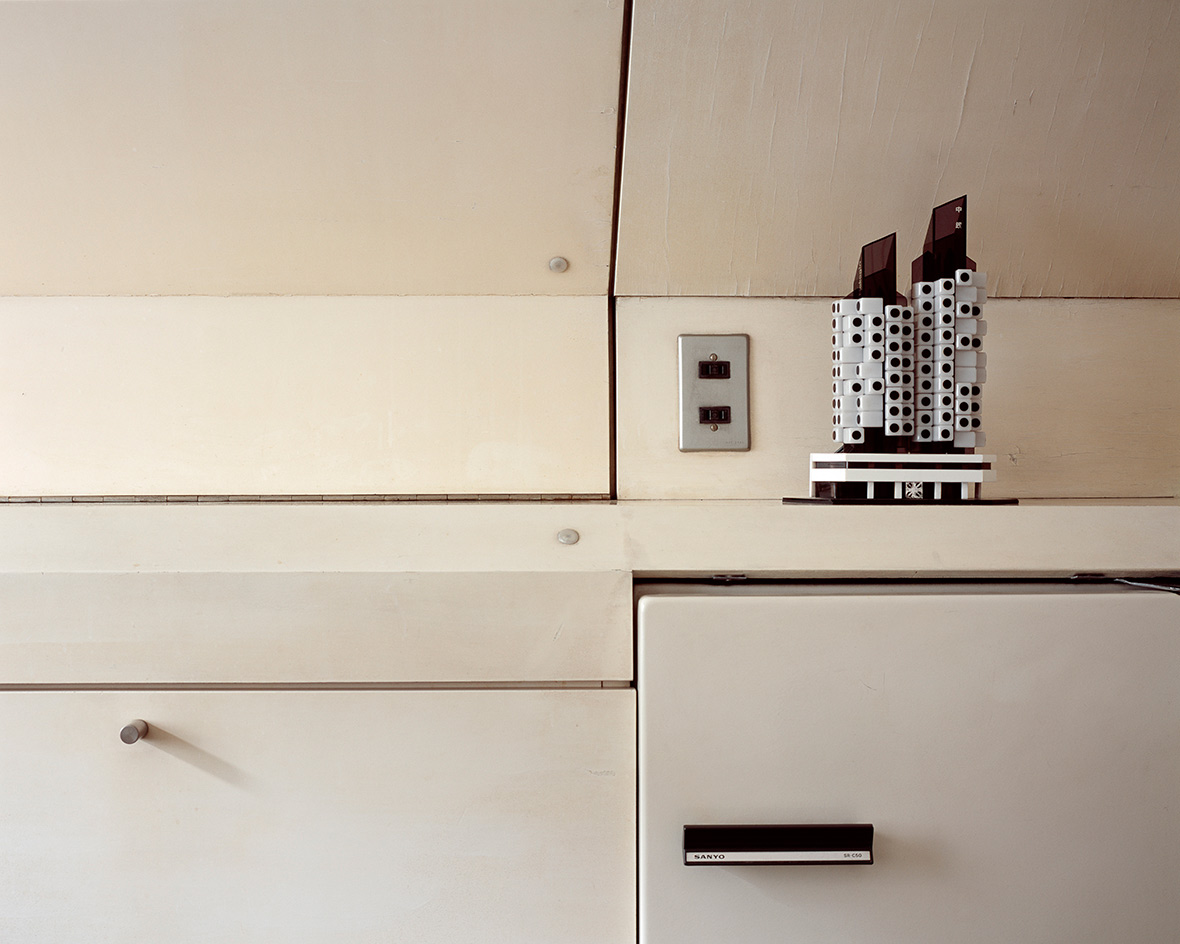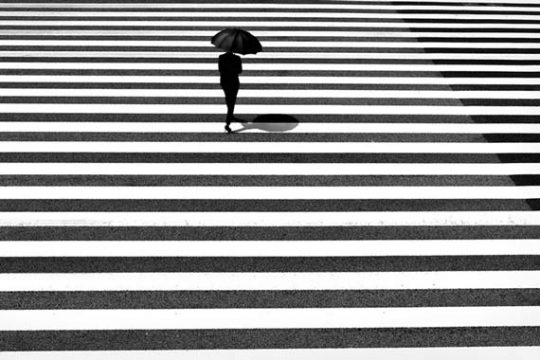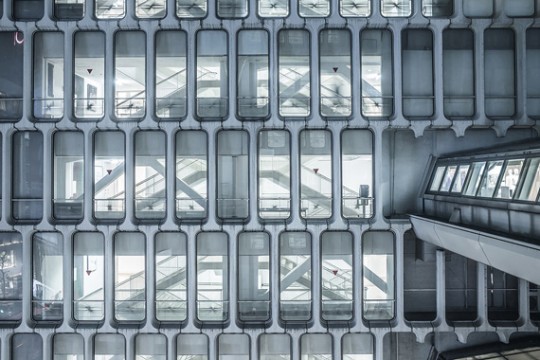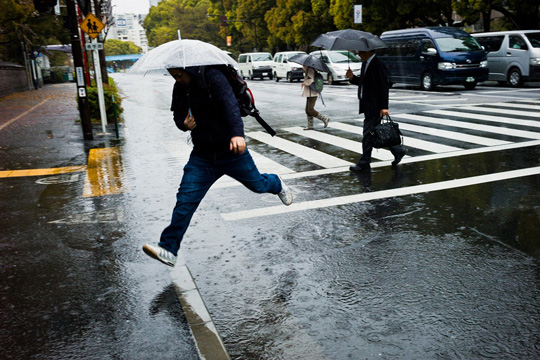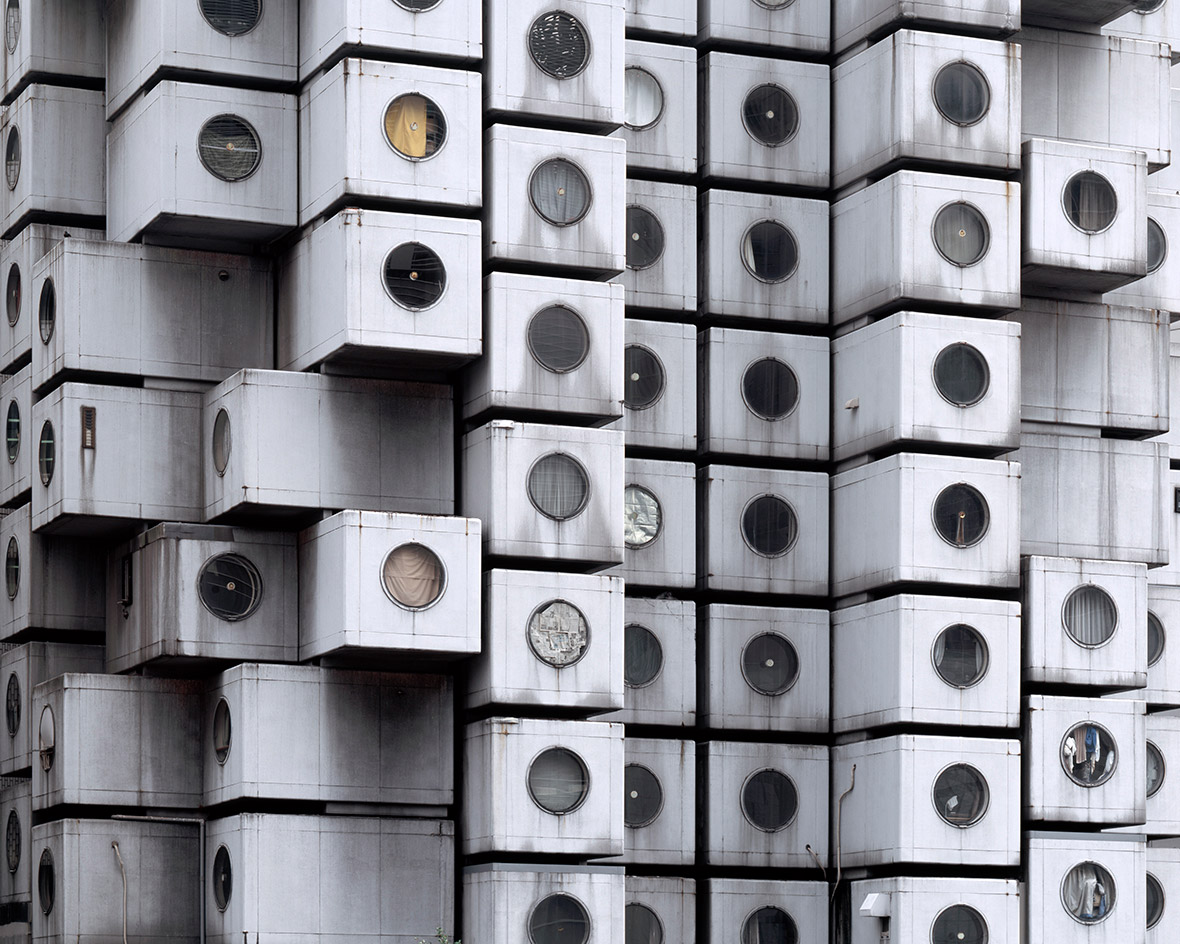
In post-war Japan, cities victim to firebombings were left in a state of ruin and despair. But in the wake of devastation, some Japanese architects optimistically saw opportunity; they saw a chance to prove the country’s resilience, rebuild their cultural identity, and transform the nation into an improved version of its previous self. During this period of time, the influential architectural movement known as Metabolism was born, revolving around the concepts of organic growth and megastructures. The idea was that buildings didn’t have to be static; instead, they could be ever-changing, adapting and transforming according to different needs. One of the most iconic buildings of the movement—the Nakagin Capsule Tower—can still be found today in Tokyo’s Ginza District. Built by the famous architect Kisho Kurokawa, the unique structure consists of 140 removable capsules plugged into two concrete cores and is the main subject of Noritaka Minami’s photo book 1972, named after the year that the building was officially completed.
戦後の日本、爆撃の被害を受けた都市が廃墟と化し、絶望的な状況に陥りました。しかし、そのような焼け野原に好機を見出した建築家達がいました。日本の回復力を示し、文化的アイデンティティを再構築し、国を元の姿の改良版に変えるチャンスだと考えたのです。この当時、有機的成長およびメガストラクチャーの概念を中心に展開する影響力の高い建築運動「メタボリズム」が生まれました。それは、建物が静的なものである必要はなく、様々なニーズに合わせて絶えず変化し、順応し、変形できるものという発想でした。この運動の最も象徴的な建築物の一つが、今も東京・銀座に建つ中銀カプセルタワービルです。有名な建築家、黒川紀章設計のこの特異な構造は、2本のコンクリートコアに繋がった取り外し可能な140戸のカプセルで構成され、この建物の竣工年にちなんだミナミ・ノリタカ氏の写真本『1972』の主題なのです。
Noritaka Minami is a Japanese-born and America-raised photographer who only began documenting the building in 2010. At the time, there was a sense of urgency to complete the project. “There was a very real possibility that it would be demolished and replaced with a more ‘conventional’ apartment complex,” says Minami. “As of today, the building does not face imminent destruction, but still faces a very uncertain future in regards to its preservation.” The building was experimental, a prototype that sought to explore the possibilities of alternative methods of urban living in the future. Through his photos, Minami wants to offer viewers an opportunity to see the past’s interpretation of the future.
日本で生まれ、アメリカで育ったミナミ・ノリタカ氏は、2010年にこの建物を記録し始めたばかりの写真家です。当時は、同プロジェクトを早急に完成させるという切迫感に苛まれていました。「この建物が取り壊され、もっとありきたりの共同住宅に建て替えられるという非常に現実的な可能性があったのです。」とミナミ氏は語ります。「今日現在、差し迫った取り壊しには直面していませんが、建物の保存についての将来は今も漠然としています。」この建物は、都市生活の代替的方法の可能性を探ることを目的とする原型でした。自身の写真を通じてミナミ氏は、過去における未来の解釈を伝える機会を見る者に与えたいと考えています。
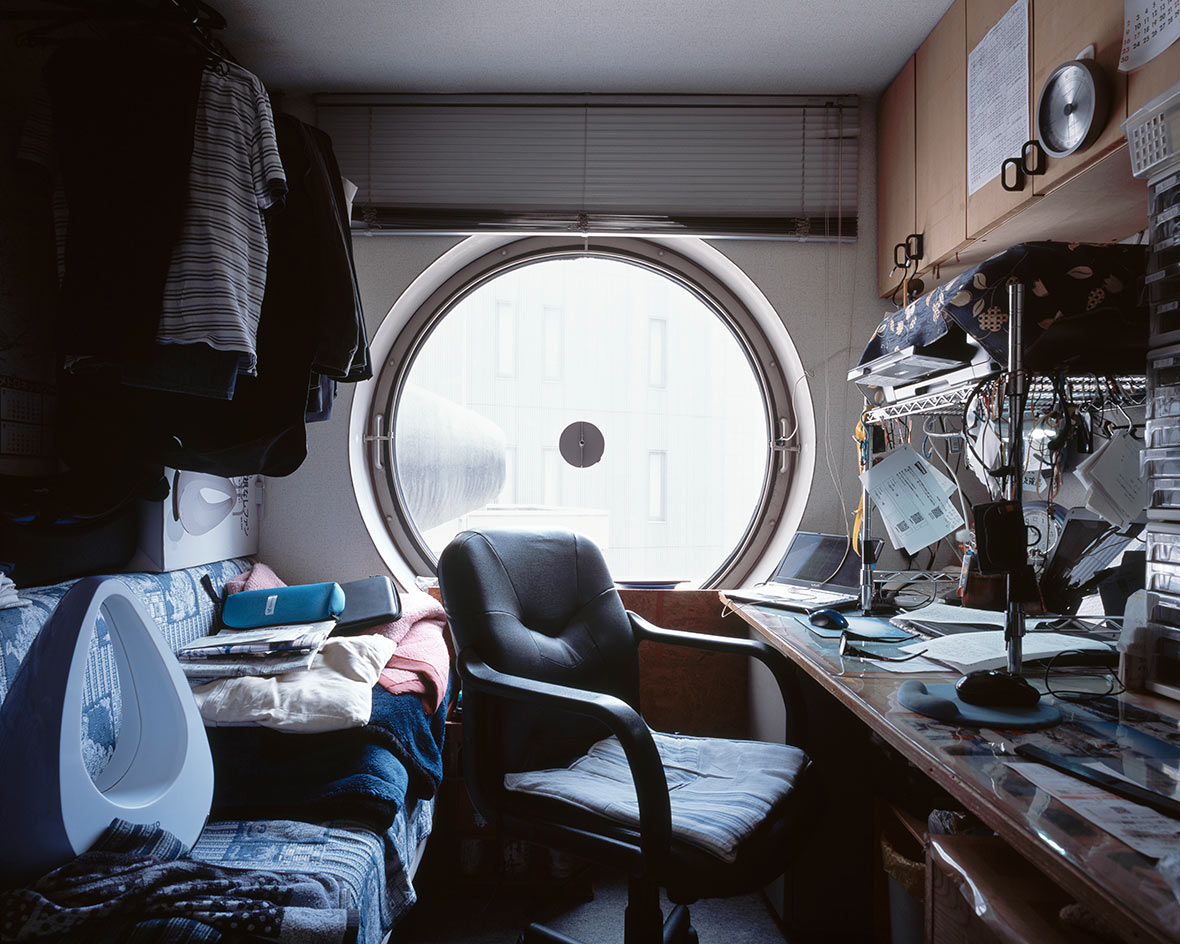
“Each capsule is a container that has accumulated all of the moves and decisions that were performed by individuals over the course of four decades,” says Minami. “Although I do not directly depict the resident who occupies that space, I want each photograph to suggest that the capsule holds the history and presence of people who occupy or have occupied that space.” With respect to the inhabitants, his photographs are completely documentary in nature; objects, furnishings, and light were photographed as it were without any alterations on his part.
「カプセルはそれぞれ、過去40年に渡って個人が蓄積してきたあらゆる行動や決断が積み重なった容器です。」そうミナミ氏は述べます。「私は、この空間の居住者を直接描写しているわけではありませんが、写真の一枚一枚を通して、カプセルが留める住人の経歴や存在を暗示できればと思います。」居住者に敬意を払い、彼の写真は完全にドキュメンタリーの性質を持ち、物、家具、光は、手を加えられることなく、ありのままに撮影されています。
Shot on both medium and large-format cameras with an ultra-wide lens, Minami’s collection of images captures the nuances of each ten square meter living space, revealing the the ways each resident has adapted to the living conditions. “The limited space of a capsule also influences the amount of belongings each resident can possess, more so than a conventional apartment,” Minami mused. The restricted space of each capsule often leads to the majority of an inhabitant’s worldly belongings to sit out in plain view; To this effect, Minami saw each pod as an extension of each resident’s personality. “From a very early point in its history, the criticism against the Capsule Tower was that the individual units are too small and not flexible enough for everyday use,” he says. “Yet, the fact that these small rooms are still being occupied to this day demonstrate the residents’ ability to find new and unexpected applications within the limited area of ten square meters that go beyond the original vision of the building as urban homes for businessmen.”
超広角レンズを用いて、中判と大判両方のカメラで撮影されたミナミ氏の一連の写真は、各10平方メートルの生活空間のニュアンスを捉え、それぞれの居住者がいかにしてこの生活条件に順応していったのかを示すものです。「カプセル1戸の限られたスペースは、標準のアパートと比べて各居住者が保持できる所有物の量にもはるかに大きく影響します」とミナミ氏はつぶやきます。カプセルの限られた空間のため、住人の生活感あふれる所有物のほとんどが目につく場所に置かれることになります。このことから、ミナミ氏は各戸を住人それぞれの個性の延長とみなしました。「カプセルタワーの歴史のごく初期の段階から、この建物への批判といえば、個々の単位があまりにも小さく、日常の用途としては融通が利かないというものでした。」ミナミ氏は続けます。「それでも、この小さな部屋に現在まで住居者がいることを考えれば、10平方メートルという限られた領域内で、ビジネスマンのための都会の住居という当初の構想を超越する斬新で予想外の応用法を見つける住人の才覚がうかがえます。」
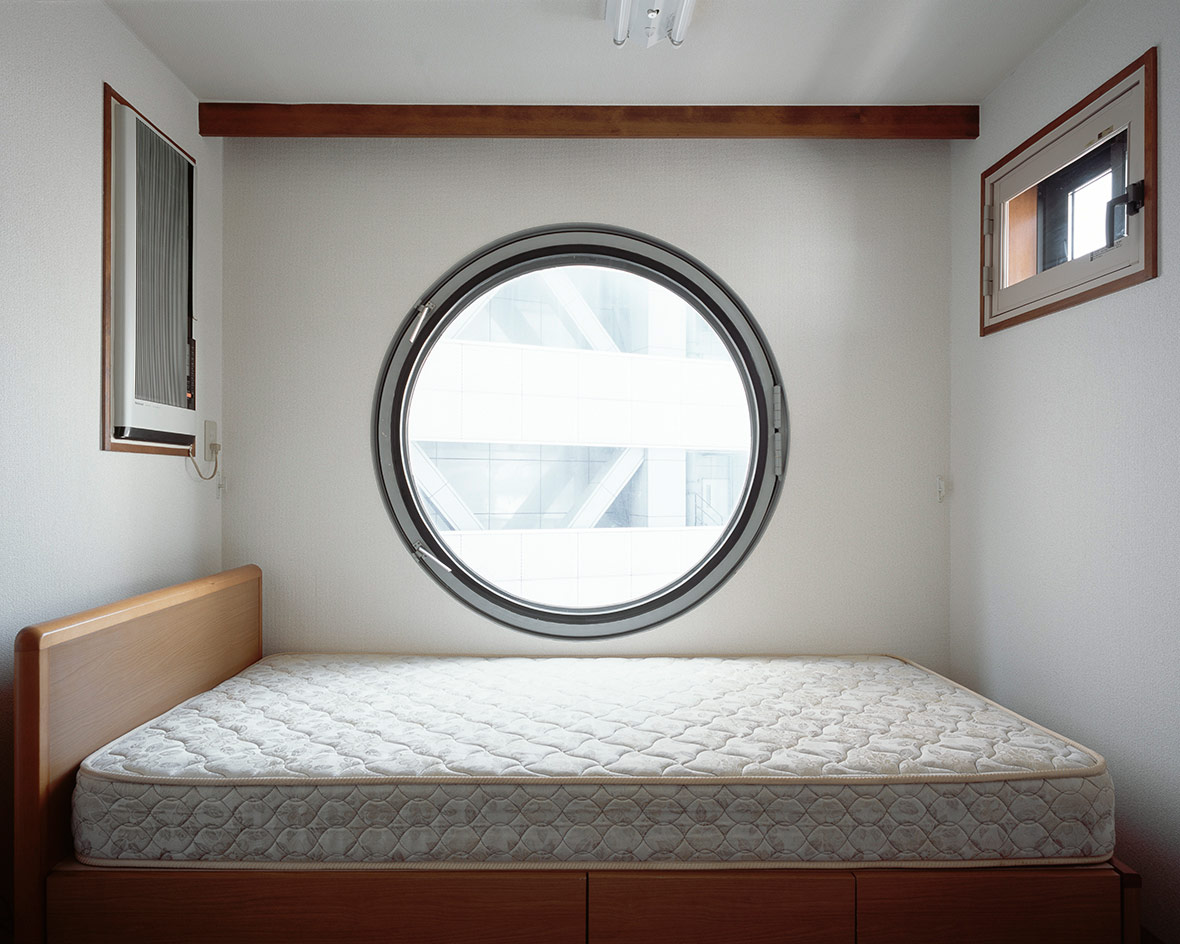
As the Nagakin Capsule Tower is a private building, gaining access can be rather difficult for non-residents. “The project was only possible through the generosity of the couple that first allowed me to visit their capsule during the summer of 2010,” Minami explained. Many of the photographs in the book were made possible through the couple’s acquaintances in the building. By luck, Minami eventually met others in the building who granted him permission to document their pods, offering a candid glimpse into their living space.
中銀カプセルタワーは民間の建物であることから、部外者が建物内に入るのは容易ではありません。「このプロジェクトは、2010年の夏、初めてカプセル訪問の許可をくださったご夫妻のご好意なくしては実現不可能でした」とミナミ氏は説明します。この本に掲載された写真の多くは、この建物に住む同夫妻の知人を介して実現したものです。運良く、ミナミ氏は他の住人とも出会い、彼らの住居を記録し、住空間のありのままの姿を垣間見る許可も得たのです。
During the time that Minami worked the project, the people that chose to live in the building came from all walks of life, ranging from a young local art student attending university to a construction worker in his sixties. What attracted each resident was different: some were interested in its historical significance, some were curious about living in an unconventionally built structure, and others lived there for practical reasons like convenience and affordability. Although many residents are in favor of preserving the building, aware of its history and cultural significance, there are some residents who aren’t as keen, seeing the potential of maximizing the prime real estate that the building sits on by replacing it with a newer apartment.
ミナミ氏がこのプロジェクトに取り組む間、この建築物を住居として選んだのは、地域の若い美大生から、60代の建設作業員まであらゆる階層の人々でした。この建物に惹かれた理由は居住者によって様々で、建築物の歴史的意味合いに興味を持つ者もいれば、異例な形で建設された構造に住んでみたいという好奇心から、さらには便利で安価という実用的な理由から住む者もありました。居住者の多くが、カプセルタワーの歴史的・文化的意味合いを認識した上で保存に賛成する一方、この建物が立地する一等地を最大限に活かして新しい集合住宅に建て替える可能性を支持することから、保存に賛成できないという住人もいます。
Minami’s book was finally published last year, made possible with a successful Kickstarter campaign and a grant from the Graham Foundation for Advanced Studies in the Fine Arts. “The idea of presenting this project as a photo book attracted me because the format could show more photographs than what is normally possible within the physical space of a gallery,” he explained. “Designing the book also presented challenges and possibilities that are different from designing an exhibition. I learned a lot by creating the specific selection and sequence of images in order for the series to be experienced as a book.” 1972 is now available online through Amazon and other select retailers.
ミナミ氏の本は、成果の高いKickstarterのキャンペーンおよびグラハム財団高度美術研究基金からの助成金を得て、昨年ようやく出版されました。「このプロジェクトを写真本として発表するアイデアに惹かれたのは、この形ならギャラリーの物理的空間で展示可能な数より多くの写真を公開できるからです」とミナミ氏は説明します。「この本のデザインは、展覧会を構成するのとは違った課題や可能性を示すものでもありました。写真の具体的な選択や順序付けにより、本として一連の情景を手に取るように感じられるよう制作する中で多くを学んだのです。」『1972』は現在、Amazonや他の一流の小売業者によりオンライン販売中です。
